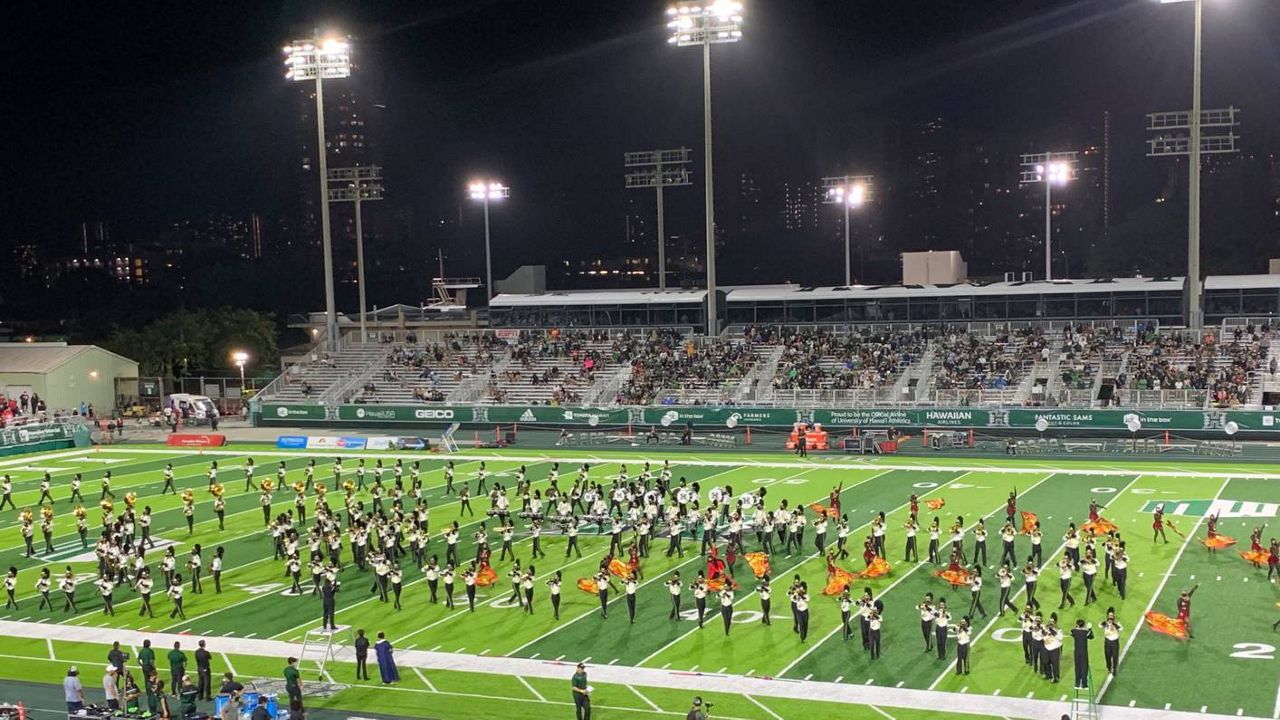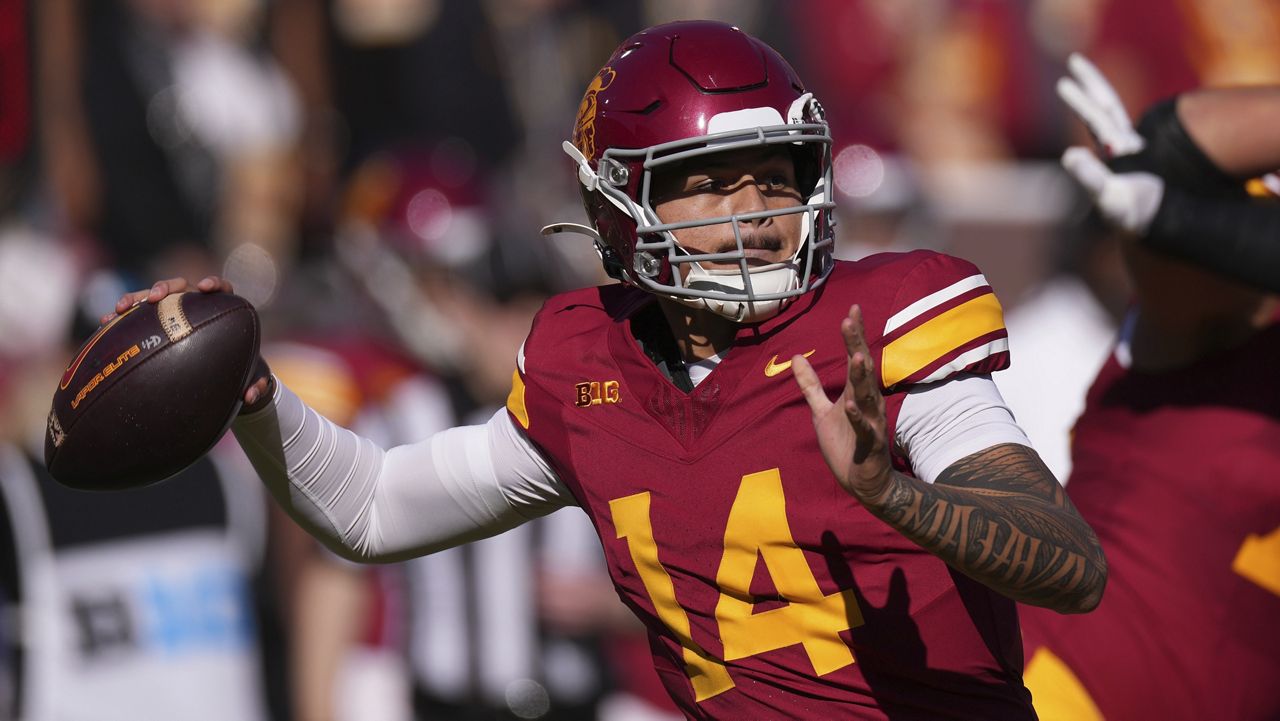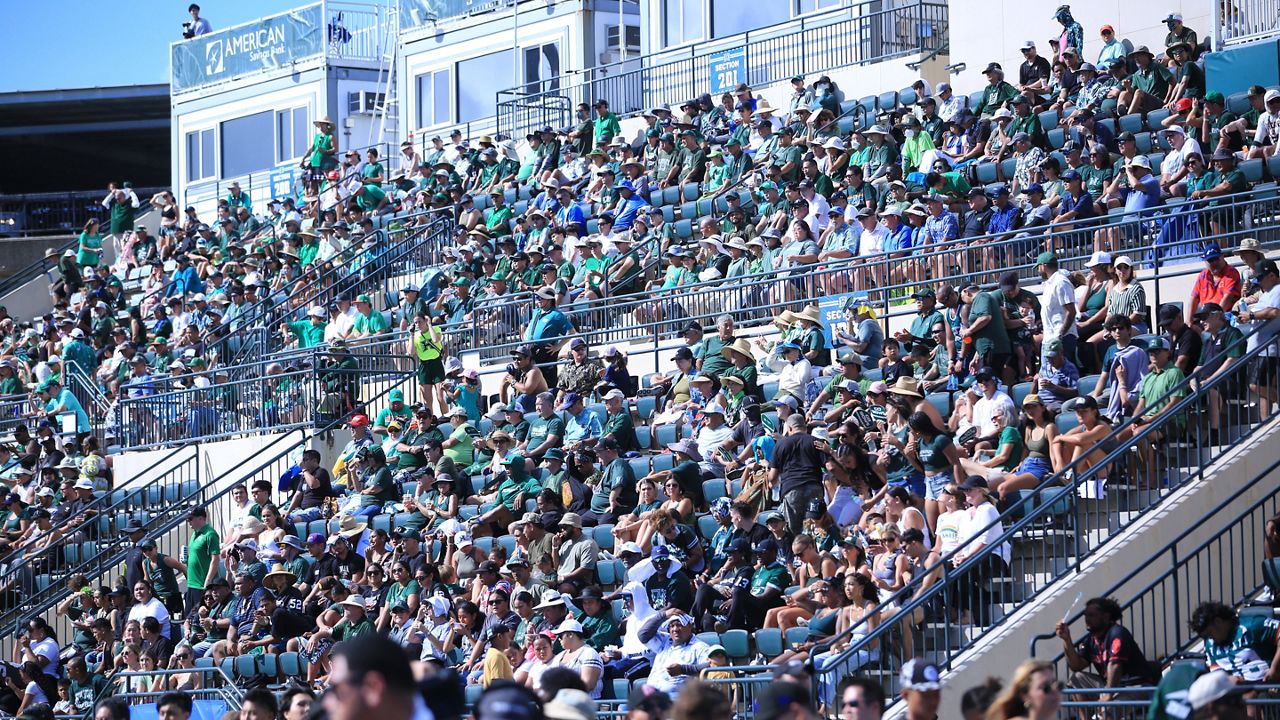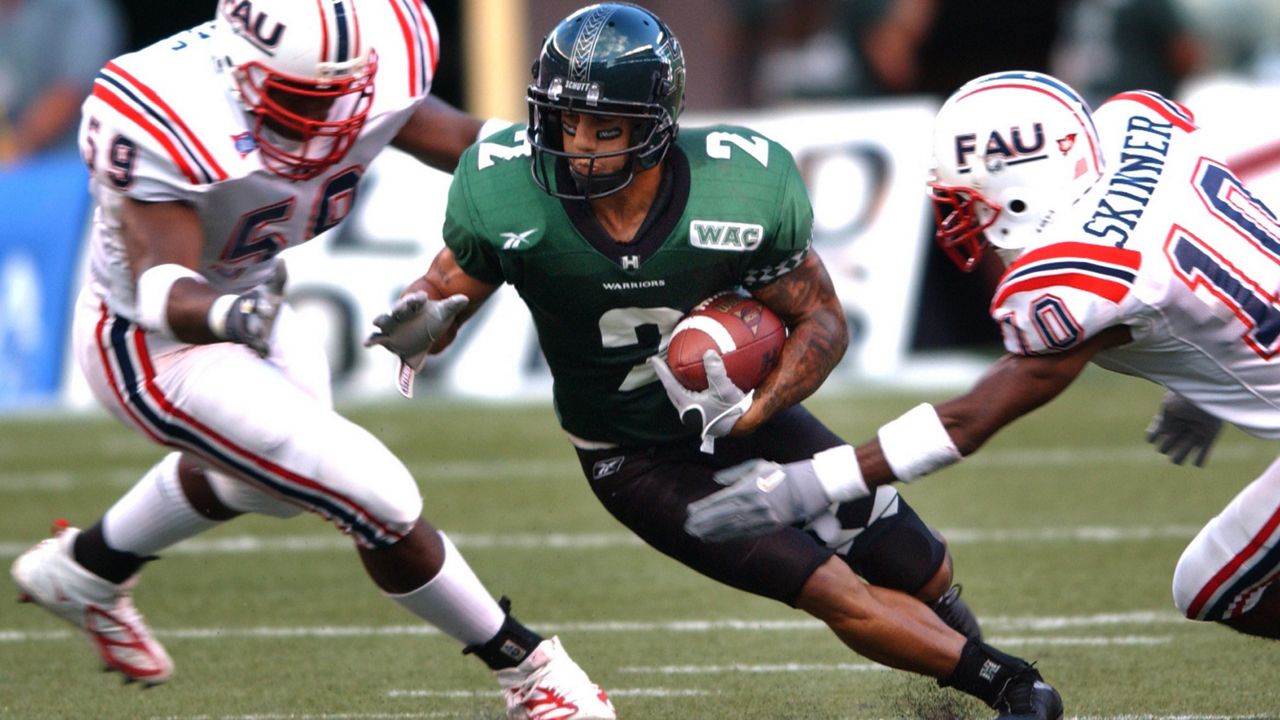HONOLULU — Expressing concern for the future of its Division I football program, the University of Hawaii Board of Regents on Thursday approved a $30 million proposal to expand seating at the Clarence T.C. Ching Athletics Complex to 17,000.
The 10 present members of the board voted 9-1 in favor of the plan, which involves relocating the track at the Ching Complex to adjacent Cooke Field to make way for additional stands as well as the 75-foot-wide video scoreboard from defunct Aloha Stadium.
Cooke, currently a two-tiered grass practice field for the UH football and soccer teams, will eventually become the home site for Rainbow Wahine soccer games, per the plan brought before the board.
“I’m very appreciative of the leadership of the university and the regents,” UH Athletic Director David Matlin told Spectrum News afterward. “It’s obviously very important to our athletic department and our student-athletes. Not just football, but soccer and track in the long run. But also, having a viable D-I (football) program helps all of our programs from a financial perspective.”
Members of the board voiced worries during the regularly scheduled meeting that UH might lose its Football Bowl Subdivision status due to an NCAA stipulation that teams must average 15,000 in actual or paid attendance once every two years. Upon the sudden shutdown of aging Aloha Stadium in December 2020, UH scrambled to upgrade the on-campus Ching Complex to make it playable going into the 2021 season, importing bleachers to raise the capacity to about 9,000. But Capital Improvement Project money to expand further to 15,000 did not materialize at the finale of the last state legislative session.
UH administration, including Matlin and President David Lassner, had been working on the Ching proposal behind the scenes for about the last three months knowing the university was in an unusual position with some financial flexibility.
The funds will come indirectly through a one-time $50 million infusion of so-called “Maintenance of Effort” money given to UH from the state by way of federal pandemic relief. UH cannot apply the MOE funding on capital projects like the Ching Complex upgrades, according to its proposal, but it does allow it to move money around and draw from wells like the Tuition and Fees Special Funds.
“I think this is one of the bigger decisions I’ve had to make as a regent. Thirty million is a big number,” said Alapaki Nahale-a, the Hawaii Island-based board vice chair.
Nahale-a, a Hilo native, has never been to a UH football game. But, he said, after calls about Mauna Kea, he hears the most from his constituents about the Rainbow Warriors.
“The reality is that our football team matters to the state of Hawaii. It does,” Nahale-a said. “And for a lot of people that don’t really feel any other connection to us, that’s the connection they’ve made. The football team represents … who we are as an institution.”
Lassner and a handful of voting members also voiced misgivings about the New Aloha Stadium Entertainment District Project in Halawa, now tentatively scheduled for a 2026 completion after a series of delays. Gov. David Ige recently cleared $400 million for NASED, but his term expires in December and it’s unknown if the next administration will be as supportive.
“This is an unusual project for us in a number of ways,” said Randy Moore, the board chair, before the Ching Complex proposal was put to a vote. “It seems to me that this is not an economic decision we’re being asked to make … but it’s a response to the lack of definition of what the state is going to do at Halawa. That horizon for getting something done at Halawa continues to recede. It’s hard to say when, if ever (it will happen).”
He noted UH will still have to go through the City and County of Honolulu permit approvals process for Ching expansion.
Matlin told Spectrum News that after the regents’ vote, the Request For Proposals process can now begin.
Construction would commence in January with the anticipated upgrades, bringing the capacity from the current 9,300 to 15,000 by August, before the Sept. 1, 2023 home opener against Stanford. The mauka and makai sideline seating would remain largely the same, but the end zones would be dramatically expanded and the corners of the field would now have seating connecting the four sides.
The Aloha Stadium video board would go behind the end zone on the Diamond Head side, near Les Murakami Stadium.
That part of the project is estimated at $15 million. Another variation, keeping the track at Ching and building the stands higher, was considered, Matlin said, but presented a host of other challenges, including increased cost. That scenario was previously was pegged at about $18 million, but that was before inflation spiked worldwide this year.
The track relocation to Cooke Field, where the soccer team holds practices, will begin in early 2023 and also cost about $15 million.
The proposal states: “Due to the size of the track, the Mauka hill will be excavated and a new retaining wall will be installed. The existing practice fields will need to be leveled to account for the differing field elevations.”
A drainage and irrigation system will be installed underneath the field for UH soccer and the new track will encompass the field. Its target completion date is May 2024.
Matlin said options for a temporary home for the track team are being considered. UH put down a new track at the Ching Complex in 2019 at a cost of $2 million, before it became apparent the venue would be needed for football games.
UH soccer has played its games at Waipio Peninsula Soccer Stadium for nearly its entire existence as a Division I program. But the plan calls for a future phase of work to bring the Wahine on campus permanently, once lights, a scoreboard and public address booth can be procured at Cooke.
Moore wondered aloud during the regents’ meeting if the Ching Complex upgrades and associated moves were the best way to spend $30 million. But no specific alternative was voiced. Regent William Haning asked if the $30 million could be applied to a project that would alleviate academic accreditation problems.
“We’re not facing any academic threats that $30 million of one-time funding would solve,” replied Lassner. “This isn’t permanent money, and this money would likely need to be expended within the next year or so. This is not money we can put into the bank.”
The one no vote on the project came from Gabriel Lee, who suggested that UH directly consult the NCAA first to see if Division I status would indeed be lost if the facility remained as-is. One regent, Wayne Higaki, was excused.
Other regents countered that waiting to green-light the project would only cost more in the long run.
The regents voiced hope that the project would move as swiftly and as close to the original price tag as the first round of Ching Complex upgrades did in the first half of 2021. That ultimately cost about $9.3 million.
Matlin credited the Office of Project Delivery and the UH vice president for administration, Jan Gouveia, the first time around.
“They had passion for the work and they got it done,” Matlin said. “Nothing’s easy, but we have a thoughtful plan and we’ll continue to learn as we go forward. But yeah, I think it’s replicable. … It’s a great show of support for the funding to make it happen.”
Brian McInnis covers the state’s sports scene for Spectrum News Hawaii.







